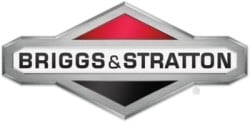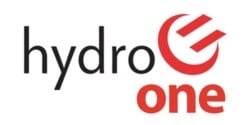This time last year, shares of e-commerce and cloud-computing company Amazon.com (NASDAQ:AMZN) could have easily looked like they had already exhausted much of their upside potential. Trading at $968 at the time, shares were up 25% in the trailing-12-month period ending Aug. 13, 2017, and they were up 83% in the two-year timeframe leading up to that date. But Amazon stock has continued to surge higher, rising 97% in the last 12 months -- nearly doubling to $1,910 at the time of this writing.
With such a monstrous run-up behind it, it's a good time to reflect on what has driven the stock so much higher over the past 12 months. Catalysts for the stock include fast-growing revenue, skyrocketing earnings per share, huge growth in Amazon Web Services, and more.
Here's what investors should know.
Image source: Amazon.com.
Top 5 Heal Care Stocks To Buy For 2019: Nuveen AMT-Free Municipal Income Fund(NEA)
Advisors' Opinion:- [By Stephan Byrd]
BB&T Securities LLC cut its holdings in Nuveen Amt-Free Quality Municpl Incm Fnd (NYSE:NEA) by 3.7% in the first quarter, according to its most recent Form 13F filing with the Securities & Exchange Commission. The fund owned 260,949 shares of the company’s stock after selling 10,037 shares during the quarter. BB&T Securities LLC owned about 0.10% of Nuveen Amt-Free Quality Municpl Incm Fnd worth $3,392,000 at the end of the most recent quarter.
- [By Joseph Griffin]
Wells Fargo & Company MN raised its holdings in Nuveen AMT-Free Municipal (NYSE:NEA) by 8.7% during the first quarter, HoldingsChannel reports. The institutional investor owned 4,674,452 shares of the company’s stock after buying an additional 372,370 shares during the period. Wells Fargo & Company MN’s holdings in Nuveen AMT-Free Municipal were worth $60,768,000 as of its most recent SEC filing.
Top 5 Heal Care Stocks To Buy For 2019: California Grapes International, Inc. (CAGR)
Advisors' Opinion:- [By SEEKINGALPHA.COM]
It is hard to fully wrap your hands around the potential market opportunity that Accenture will have in the years ahead but I believe that the opportunities are almost endless (dramatic, I know). For example, consider these forecasts that Forbes detailed in its "2017 Roundup Of Internet Of Things Forecast" report:
According to Bain, "B2B IoT segments will generate more than $300B annually by 2020, including about $85B in the industrial sector". According to PwC, "$6T will be spent on IoT solutions between 2015 and 2020". According to Accenture, "Industrial Internet Of Things could add $14.2T to the economy by 2020". According to Statista, "The global Internet of Things (IoT) market is projected to grow from $2.99T in 2014 to $8.9T in 2020, attaining a 19.92% Compound Annual Growth Rate (OTCPK:CAGR). Industrial manufacturing is predicted to increase from $472B in 2014 to $890B in global IoT spending. Healthcare and life sciences are projected to increase from $520B in 2014 to $1.335T in 2020, attaining a 17% CAGR".The forecasts compiled by Forbes are all over the place but one thing is consistent, that is, the growth potential for IoT (and the sub-industries) is real. Connected things are expected to experience significant growth and I believe that it is hard to deny that digital will play a key role in the future growth of the global economy.
Top 5 Heal Care Stocks To Buy For 2019: Four Corners Property Trust, Inc.(FCPT)
Advisors' Opinion:- [By Shane Hupp]
Boenning Scattergood set a $30.00 target price on Four Corners Property Trust (NYSE:FCPT) in a research report released on Friday morning. The firm currently has a buy rating on the financial services provider’s stock.
- [By Stephan Byrd]
Get a free copy of the Zacks research report on Four Corners Property Trust (FCPT)
For more information about research offerings from Zacks Investment Research, visit Zacks.com
- [By Joseph Griffin]
These are some of the media headlines that may have impacted Accern Sentiment Analysis’s scoring:
Get Four Corners Property Trust alerts: FCPT Closes 46 Chili's Restaurant Properties for $149.8 million as part of Previously Announced Brinker Sale-Leaseback Transaction (finance.yahoo.com) FCPT Announces Acquisition of a Buffalo Wild Wings Restaurant Property for $1.7 million (finance.yahoo.com) Four Corners Property Trust (FCPT) vs. Sutherland Asset Management (SLD) Head to Head Analysis (americanbankingnews.com) FCPT Announces Acquisition of an Arby's Restaurant Property for $1.6 million (finance.yahoo.com) Four Corners Property Trust Inc (FCPT) Expected to Post Quarterly Sales of $35.62 Million (americanbankingnews.com)Shares of Four Corners Property Trust traded down $0.16, hitting $26.01, during trading hours on Friday, according to MarketBeat Ratings. The stock had a trading volume of 360,648 shares, compared to its average volume of 479,703. The company has a current ratio of 6.59, a quick ratio of 6.59 and a debt-to-equity ratio of 0.90. The firm has a market capitalization of $1.65 billion, a P/E ratio of 19.13 and a beta of -0.04. Four Corners Property Trust has a 12-month low of $21.28 and a 12-month high of $26.96.
- [By Joseph Griffin]
Neuberger Berman Group LLC trimmed its position in Four Corners Property (NYSE:FCPT) by 12.6% during the 1st quarter, according to the company in its most recent filing with the Securities and Exchange Commission (SEC). The firm owned 61,299 shares of the financial services provider’s stock after selling 8,843 shares during the period. Neuberger Berman Group LLC owned 0.10% of Four Corners Property worth $1,415,000 as of its most recent filing with the Securities and Exchange Commission (SEC).
Top 5 Heal Care Stocks To Buy For 2019: Matrix Service Company(MTRX)
Advisors' Opinion:- [By Ethan Ryder]
Matrix Service Co (NASDAQ:MTRX) CEO John R. Hewitt sold 17,816 shares of the firm’s stock in a transaction dated Wednesday, June 13th. The shares were sold at an average price of $19.25, for a total transaction of $342,958.00. Following the transaction, the chief executive officer now directly owns 261,213 shares in the company, valued at approximately $5,028,350.25. The transaction was disclosed in a document filed with the SEC, which is available at the SEC website.
- [By Lisa Levin]
Companies Reporting After The Bell Booking Holdings Inc. (NASDAQ: BKNG) is projected to post quarterly earnings at $10.67 per share on revenue of $2.87 billion. CenturyLink, Inc. (NYSE: CTL) is expected to post quarterly earnings at $0.19 per share on revenue of $6.00 billion. Albemarle Corporation (NYSE: ALB) is projected to post quarterly earnings at $1.21 per share on revenue of $803.36 million. Spectra Energy Partners, LP (NYSE: SEP) is estimated to post quarterly earnings at $0.81 per share on revenue of $751.57 million. IAC/InterActiveCorp (NASDAQ: IAC) is expected to post quarterly earnings at $0.8 per share on revenue of $923.80 million. Open Text Corporation (NASDAQ: OTEX) is projected to post quarterly earnings at $0.62 per share on revenue of $691.75 million. Tutor Perini Corporation (NYSE: TPC) is expected to post quarterly earnings at $0.29 per share on revenue of $1.09 billion. Twenty-First Century Fox, Inc. (NASDAQ: FOXA) is projected to post quarterly earnings at $0.54 per share on revenue of $7.41 billion. ICU Medical, Inc. (NASDAQ: ICUI) is estimated to post quarterly earnings at $1.84 per share on revenue of $346.28 million. TechnipFMC plc (NYSE: FTI) is expected to post quarterly earnings at $0.33 per share on revenue of $3.13 billion. Synaptics Incorporated (NASDAQ: SYNA) is projected to post quarterly earnings at $0.91 per share on revenue of $401.76 million. The Dun & Bradstreet Corporation (NYSE: DNB) is expected to post quarterly earnings at $1.07 per share on revenue of $386.91 million. Matrix Service Company (NASDAQ: MTRX) is estimated to post quarterly earnings at $0.07 per share on revenue of $285.16 million. Maiden Holdings, Ltd. (NASDAQ: MHLD) is projected to post quarterly earnings at $0.21 per share on revenue of $739.31 million. tronc, Inc. (NASDAQ: TRNC) is expected to post quarterly earnings at $0.65 per share on revenue of $428.25 million. Copa Holdings, - [By Garrett Baldwin]
This is just the start of the cryptocurrency revolution…
Shares of Alibaba Group Holding Ltd. (NYSE: BABA) fell 1.2% after founder and Chair Jack Ma announced he will be stepping down next year. Ma said that the demands of the chair role required tireless "ability and energy." The firm said that CEO Daniel Zhang will assume the position in 12 months. Tesla Inc. (Nasdaq: TSLA) shares added more than 3% this morning despite the recent departure of senior level executives Dave Morton and Gaby Toledano. The company has seen 41 executives depart the firm this year, but little explanation has been provided for the mass exodus. CBS Corp. (NYSE: CBS) stock will be in focus after news broke that CEO Leslie Moonves will be stepping down. The media executive has faced multiple allegations of sexual misconduct. The firm said that acting COO Joseph Ianniello could fill the CEO role until the board of directors finds a "permanent successor." Look for earnings reports from Casey's General Stores Inc. (Nasdaq: CASY), National Beverage Corp. (Nasdaq: FIZZ), Limoniera Co. (Nasdaq: LMNR), and Matrix Service Co. (Nasdaq: MTRX).Quickly Amass a Potential $1.5 Million Retirement Nest Egg: Pension plans are already defaulting left and right, and now promises made to retirees are being shattered. But it's not too late to tap into this financial defense strategy – as long as you arm yourself soon.
- [By Motley Fool Transcribers]
Matrix Service Co (NASDAQ:MTRX)Q2 2019 Earnings Conference CallFeb. 07, 2019, 10:30 a.m. ET
Contents: Prepared Remarks Questions and Answers Call Participants Prepared Remarks:Operator
Top 5 Heal Care Stocks To Buy For 2019: Poage Bankshares, Inc.(PBSK)
Advisors' Opinion:- [By Joseph Griffin]
News coverage about Poage Bankshares (NASDAQ:PBSK) has been trending somewhat negative on Thursday, according to Accern. The research firm identifies positive and negative media coverage by reviewing more than twenty million blog and news sources in real-time. Accern ranks coverage of public companies on a scale of negative one to one, with scores nearest to one being the most favorable. Poage Bankshares earned a daily sentiment score of -0.06 on Accern’s scale. Accern also assigned headlines about the savings and loans company an impact score of 47.5091086029881 out of 100, meaning that recent media coverage is somewhat unlikely to have an effect on the stock’s share price in the next several days.
- [By Stephan Byrd]
Poage Bankshares (NASDAQ:PBSK) announced its earnings results on Monday. The savings and loans company reported $0.21 earnings per share (EPS) for the quarter, Bloomberg Earnings reports. The company had revenue of $5.39 million for the quarter. Poage Bankshares had a negative return on equity of 4.84% and a negative net margin of 14.32%.

 24/7 Wall St.
24/7 Wall St. Brokerages expect Briggs & Stratton Co. (NYSE:BGG) to report earnings per share (EPS) of $0.87 for the current quarter, according to Zacks Investment Research. Three analysts have provided estimates for Briggs & Stratton’s earnings. The lowest EPS estimate is $0.75 and the highest is $1.07. Briggs & Stratton reported earnings of $0.84 per share during the same quarter last year, which indicates a positive year-over-year growth rate of 3.6%. The firm is expected to announce its next earnings results on Wednesday, April 24th.
Brokerages expect Briggs & Stratton Co. (NYSE:BGG) to report earnings per share (EPS) of $0.87 for the current quarter, according to Zacks Investment Research. Three analysts have provided estimates for Briggs & Stratton’s earnings. The lowest EPS estimate is $0.75 and the highest is $1.07. Briggs & Stratton reported earnings of $0.84 per share during the same quarter last year, which indicates a positive year-over-year growth rate of 3.6%. The firm is expected to announce its next earnings results on Wednesday, April 24th.
 BitcoinX (CURRENCY:BCX) traded 0.2% higher against the dollar during the 1-day period ending at 15:00 PM E.T. on February 16th. BitcoinX has a total market capitalization of $0.00 and $43,789.00 worth of BitcoinX was traded on exchanges in the last 24 hours. Over the last week, BitcoinX has traded 21.9% higher against the dollar. One BitcoinX coin can now be purchased for $0.0020 or 0.00000055 BTC on popular exchanges including $10.39, $24.43, $50.98 and $7.50.
BitcoinX (CURRENCY:BCX) traded 0.2% higher against the dollar during the 1-day period ending at 15:00 PM E.T. on February 16th. BitcoinX has a total market capitalization of $0.00 and $43,789.00 worth of BitcoinX was traded on exchanges in the last 24 hours. Over the last week, BitcoinX has traded 21.9% higher against the dollar. One BitcoinX coin can now be purchased for $0.0020 or 0.00000055 BTC on popular exchanges including $10.39, $24.43, $50.98 and $7.50.  Hydro One (TSE:H)‘s stock had its “market perform” rating reaffirmed by investment analysts at Raymond James in a report released on Wednesday.
Hydro One (TSE:H)‘s stock had its “market perform” rating reaffirmed by investment analysts at Raymond James in a report released on Wednesday. Shares of EQT Co. (NYSE:EQT) traded down 5.3% during mid-day trading on Thursday following a dissappointing earnings announcement. The company traded as low as $17.92 and last traded at $18.20. 6,704,326 shares were traded during mid-day trading, an increase of 38% from the average session volume of 4,871,953 shares. The stock had previously closed at $19.21.
Shares of EQT Co. (NYSE:EQT) traded down 5.3% during mid-day trading on Thursday following a dissappointing earnings announcement. The company traded as low as $17.92 and last traded at $18.20. 6,704,326 shares were traded during mid-day trading, an increase of 38% from the average session volume of 4,871,953 shares. The stock had previously closed at $19.21.

 Source: Shutterstock
Source: Shutterstock  ValuEngine upgraded shares of Bridgepoint Education (NYSE:BPI) from a sell rating to a hold rating in a report issued on Monday.
ValuEngine upgraded shares of Bridgepoint Education (NYSE:BPI) from a sell rating to a hold rating in a report issued on Monday.


